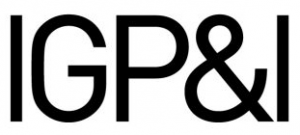China’s maritime courts have developed a distinct approach to cargo claims. From shortage disputes to quality claims, carriers navigating Chinese ports face a complex legal landscape where evidence, survey methods, and procedural precision can determine the outcome.

Cargo claims in China: Legal framework, challenges, and enforcement considerations
Written by
Published 28 August 2025
The China Maritime Code (CMC), enacted in 1993, governs maritime transport and cargo disputes in China. It defines the rights and liabilities of carriers and cargo interests, covering seaworthiness, burden of proof, time bars, and liability limits. Chinese courts apply the CMC to international shipments governed by Chinese law, making it central to cargo claims arising from discharge at Chinese ports.
The CMC aligns closely with the Hague-Visby Rules (HVR), particularly on carrier obligations and exemptions, including due diligence and liability defences. Both impose a one-year claim period and monetary caps. However, the CMC also reflects unique domestic legal practices, sometimes extending carrier duties beyond HVR standards. This blend of international norms and local policy makes the CMC a distinct and evolving legal tool in China.
Shortage claims
Common causes
Shortage claims in China often stem from lightering operations, where cargo is transferred to smaller vessels at multiple ports before final discharge. This process can lead to quantity discrepancies due to factors affecting draft survey accuracy—such as sea swell, water density, ballast conditions, weather, and surveyor expertise. The absence of independent surveys at anchorage further complicates verification, exposing shipowners or charterers to short delivery claims.
Lightering is common for Panamax bulk carriers at Chinese ports with draft limits over 12 meters, including Chiwan (Shenzhen), Xinggang and Xinsha (Guangzhou), and ports along the Yangtze River. These operational constraints heighten the risk of cargo quantity disputes.
How shortages are determined
The Supreme People’s Court (SPC) of China issued the “The Carrier's Liability for Shortage of Bulk Cargo” in 2022, which provides the following principle:
In bulk cargo transport, minor shortages may occur due to natural loss, spillage, leakage, as well as the permissible error in measurement by hydrostatic weighing, etc. If a cargo shortage occurs at the discharge port, and the carrier provides evidence that it resulted from natural loss, permissible measurement error, or industry standards/customs, the People’s Court of the People’s Republic of China will generally uphold an exemption from liability—unless there is proof of carrier fault. If the shortage exceeds accepted norms and the carrier cannot distinguish between reasonable and unreasonable losses, the Court will typically support the claimant’s demand for full compensation.
Our advice
Chinese courts often rely on the ship’s draft survey to assess shortages. Disputes arise when surveys performed by the crew conflict with shore scale measurements. While carriers argue their responsibility ends at the ship’s rail, there is a risk that Chinese Courts may decide that surveys performed by the crew are not sufficient.
Therefore, when transporting cargo to China, it is advisable that:
The owner arranges for an independent surveyor to conduct the draft survey.
If no independent surveyor is appointed, the crew should at least conduct the draft survey jointly with the cargo interests’ surveyor and co-sign the draft reports.
The crew should take photographs or video recordings of the draft marks as supporting evidence.
When lightering at a sea-port is required before the vessel sails into a river port, the crew often overlook the importance of correctly recording the draft at the lightering port. This is usually because they assume all the cargo belongs to the same consignee.
Another factor driving shortage claims in China is the perception that owners often avoid contesting small claims due to high legal costs. This encourages claimants to pursue cases with low chances of success, expecting owners to settle to avoid the cost of litigation. Such settlements allow lawyers to recover part of the amount as fees.
Case study: STD DORA
In June 2023, the SPC addressed evidentiary challenges in maritime cargo disputes, particularly those arising from the coexistence of multiple weighing and inspection methods—such as draft surveys, shore scales, and inspections by official or private entities. The SPC emphasized that courts must assess the authenticity, legitimacy, and relevance of each method, with greater weight given to evidence closest in time to the carrier’s delivery point. Generally, evidence that is temporally closest to the point of delivery by the carrier is considered more reliable in reflecting the true condition of the goods.
If such evidence is consistent and unrefuted, its value should be recognized. This principle was reinforced in SDTR DORA ([2023] Jin Min Zhong No. 1025), involving soybean shipments from Rosario and Necochea on the Parana River in Argentina to Chinese ports. Clean bills of lading were issued by ISA Company, but the consignee brought a shortage claim based on Customs’ shore scale. In contrast, a draft survey by China Certification & Inspection Group (CCIC), appointed by the carrier, showed a shortage within the trade allowance. After compensating the bill of lading holder, the cargo insurer exercised subrogation rights and filed a claim against the contractual carrier for breach of the carriage contract. Both the Tianjin Maritime Court (TMC) and the Tianjin Higher Court (THC) ruled in favor of the carrier, finding no liability for the alleged shortage.
Judicial views from both the TMC and THC clarified how draft surveys and shore scale measurements are assessed in cargo shortage disputes. Courts first examine the authenticity and accuracy of draft surveys conducted by or for the carrier, then evaluate whether shore scale figures reflect cargo discharged during the carrier’s liability period. If the draft survey is reliable and the carrier has exercised due care, Tianjin courts tend to favor the draft survey over the shore scale figures.
In conclusion, while many claims rely solely on shore scale data, independent draft surveys carry greater evidentiary weight. Shipowners and charterers are advised to arrange such surveys at Chinese ports. Best practice includes inviting charterers to appoint their own surveyor for all stages of the survey. Consistent results from two independent surveyors strengthen the defence against shortage claims. Including receivers and documenting the process with photos or video further enhances evidentiary value.
Potential defence arguments
Trade allowance: In bulk cargo operations in China, trade allowance refers to the acceptable margin of discrepancy—typically around 0.5%—between loaded and discharged quantities due to handling or environmental factors. While not codified in law, such allowances are recognized in practice if supported by contract terms or industry norms. Chinese courts assess claims case-by-case, often favouring independent draft surveys over Customs or vessel records.
Insurance deductible: When insurers pursue subrogated claims, carriers may challenge the amount if the deductible—usually 0.3%—has not been applied. However, if the consignee brings the claim directly, the carrier cannot invoke the deductible, as the insurer is not the claimant.
The “Quality and Quantity Unknown” Clause: In China, this clause has limited effect. Chinese courts generally interpret such disclaimers narrowly and place more emphasis on the figures stated in the bill of lading, particularly when they are marked as “clean” or if the carrier has loaded the cargo under apparent good order and condition. Therefore, while the “quality and quantity unknown” clause may serve as a protective measure, it does not override the evidentiary weight of the bill of lading, nor does it excuse the carrier from their obligation to exercise due diligence. In contrast, English law gives broader protection to carriers using this clause, provided they had no opportunity to inspect the cargo and did not act negligently. Both jurisdictions recognize the clause, but Chinese courts apply it more restrictively.
Physical damage claims
Under Chinese maritime law, the carrier bears the burden of proof for any cargo damage occurring while the goods are in their custody. Common claims include heat damage to agricultural products and quality issues, such as contamination. In such cases, courts require the carrier to prove that the damage did not result from a failure to exercise due diligence or breach of contractual obligations.
Heat Damage
Under Chinese maritime law, when cargo is damaged upon discharge and a clean bill of lading was issued at loading, the carrier bears the burden of proving the damage was due to pre-existing conditions or inherent vice. Article 51 of the CMC provides a statutory defence for inherent vice, but courts require carriers to first demonstrate due diligence. For claims involving heat damage to agricultural products, due diligence is typically shown by proper ventilation during the voyage.
Although the effectiveness of ventilation as a preventive measure remains contested, Chinese courts consistently emphasize its importance. Any deficiencies in the ventilation log or failure to document ventilation practices may be construed as a breach of the carrier’s duty of care. As a result, courts may reject the carrier’s reliance on the inherent vice defence and hold them liable for the damage. In practice, successfully raising the inherent vice defence in China is challenging.
In addition, there is no standardized industry practice for measuring cargo temperature or conducting ventilation — whether it should be done once, twice, or every four hours, or whether ventilation should occur continuously day and night. This ambiguity allows cargo interests to identify “flaws” in the carrier’s procedures over long voyages, often around 45 days. For example, if the logbook records a sunny day but the ventilation log shows no ventilation, cargo interests may argue negligence. Similarly, if the crew records cargo hold temperatures only once daily—typically in the morning—claimants may challenge the representativeness of the data, citing the “Three Degree Rule.” Chinese courts give considerable weight to such arguments, and judges often scrutinize ventilation logs closely.
Chinese courts are cautious in accepting an inherent vice argument unless the carrier can produce clear and convincing evidence of both proper cargo care and the pre-existing nature of the defect. The standard of proof is high, and the evidentiary burden often proves difficult to meet. In a soybean cargo dispute before the Qingdao Maritime Court involving the MV DREAM STAR, the carrier presented detailed ventilation logs covering both the voyage and waiting period at Dafeng Port. These records demonstrated proper care. Although the claimant submitted a CCIC report alleging improper ventilation, the surveyor failed to identify specific shortcomings under cross-examination. The court found no negligence and ruled in favour of the carrier. However, on appeal, the Shandong High Court held the carrier 30% liable, stating that once-daily morning temperature readings were insufficient to reflect daily fluctuations. Despite strong evidence of proper ventilation, the court apportioned liability—30% to the carrier and 70% to the consignee for delayed discharge. The case underscores the evidentiary burden carriers face in Chinese courts and the importance of meticulous recordkeeping.
Quality-related claims
The CMC contains provisions that closely mirror the Hague-Visby Rules concerning a carrier’s liability when issuing clean bills of lading. Article 75 of the CMC stipulates that if a bill of lading includes particulars regarding the description, marks, number of packages or pieces, weight, or quantity of the goods, and the carrier—or the person issuing the bill on their behalf—has knowledge of or reasonable grounds to suspect inaccuracies, they are obligated to insert appropriate remarks in the bill of lading identifying those inaccuracies. Article 76 further provides that if no such remark is made concerning the apparent order and condition of the goods, the goods are deemed to be in apparent good order and condition. Additionally, Article 77 establishes that the bill of lading serves as prima facie evidence of the condition of the goods as described therein, and that proof to the contrary is inadmissible once the bill has been transferred to a third party acting in good faith.
In the MV MEGALOHARI case before the Xiamen Maritime Court, owners were held not liable for heat-damaged Brazilian soybeans. The decision was upheld on appeal by the Fujian Higher People’s Court. Cargo interests initially alleged poor ventilation, but their expert confirmed minimal impact. They then claimed clean bills of lading were wrongly issued, arguing the cargo—second-tier Brazilian soybeans—should have been described as heat-damaged and contaminated. The court ultimately held the owners not liable for the following reasons:
Carriers are not cargo quality experts. Their responsibility is limited to visual inspection for apparent defects, not hidden or internal issues.
Dust from soybeans can obscure visibility, giving carriers no clear reason to suspect quality problems.
The carrier’s assessment of the cargo as being in apparent good order was reasonable and aligned with standard inspection practices.
In the case of the MV Bulk Aquila before the Qingdao Maritime Court, the cargo was found by local Customs to contain weeds. The consignee argued that the Master’s issuance of clean bills of lading without raising objections amounted to an acceptance of responsibility for the cargo’s quality. However, the court held that the carrier is only responsible for inspecting the apparent condition of the cargo at the time of loading and is not in a position to assess its internal quality. At the time the clean bills of lading were issued, the carrier had not been provided with the cargo’s quality certificate and therefore could not be expected to identify latent defects. The court concluded that the issuance of clean bills of lading does not imply that the cargo is free from quality-related issues.
Chinese courts generally maintain that shipowners are liable only for the apparent condition of the cargo when issuing bills of lading. They are not held responsible for internal quality defects such as heat-damaged beans or the presence of foreign materials. This judicial stance provides carriers with a valid defence in cases where consignees bring claims before Chinese courts.
Procedural issues and drafting considerations
Actual vs contractual carrier
The CMC incorporates elements of the Hamburg Rules, including Article 42, which distinguishes between the “contractual carrier” and “actual carrier”—a distinction absent in the Hague-Visby Rules. Article 72 further provides that a bill of lading signed by the Master is deemed issued on behalf of the carrier, which may include time charterers. Historically, Chinese courts have held time charterers liable for cargo damage when they were actively involved in loading, lashing, or securing—even under an owner’s bill of lading. However, this position is shifting. In a recent Gard case, the TMC declined to hold the time charterer liable, marking a departure from prior practice. A pending case before the SPC is also expected to reflect a revised stance. These developments suggest a potential recalibration in how Chinese courts assess time charterer liability in cargo claims.
Time bar
Pursuant to Article 257 of the Chinese Maritime Code, cargo claims under contracts of carriage by sea are subject to a strict one-year limitation period. This period begins from the date the goods were delivered or should have been delivered. Chinese courts interpret this to mean the claim must be filed with the competent court or arbitration body within one year—service on the defendant may occur later. The time bar is substantive and cannot be extended or waived by agreement. Recent initiatives by courts like the GMC and SMC promote early resolution through voluntary pre-mediation or referral to the China Maritime Arbitration Commission (CMAC), reflecting a broader trend toward alternative dispute resolution in maritime claims.
Omission of the charterparty date
Under Chinese maritime law, omitting the charterparty date on a bill of lading can undermine the incorporation of charterparty terms—especially arbitration and governing law clauses. Courts require a clear and specific reference to the charterparty and its dispute resolution provisions. A generic mention without a date is deemed ineffective, and even with a date, clauses not expressly incorporated are unlikely to be enforced.
Judicial practice confirms that unless the bill of lading explicitly refers to the charterparty’s arbitration and governing law clauses, Chinese courts will assume jurisdiction and apply Chinese law. This strict approach protects third-party holders who may not be privy to charterparty terms. Recent cases show courts rejecting jurisdictional challenges based on unreferenced charterparties.
In conclusion, incorporation of charterparty terms under Chinese law remains uncertain. Courts demand precise references, and consignees are not bound by terms they have not seen. To avoid disputes, carriers should ensure the bill of lading clearly states the charterparty date and includes express reference to its arbitration and governing law clauses—though full incorporation remains difficult in practice.
Concluding remarks
While the Chinese Maritime Code in many respects mirrors the Hague-Visby Rules, the Chinese court’s view of the evidentiary burden to show due diligence differs from the approach of English courts and arbitration panels. The carrier’s burden to prove due diligence in support of an inherent vice defence is, as a practical matter, higher in China. Gard has experienced this feature of Chinese practice in several cases involving soya bean cargos where expert evidence established mould and heat damage was due to natural processes that could not be countered by ventilation. This has been a particularly prominent feature of cases involving transit from Brazil to Chinese ports.
The author thanks Mr. Greg Yang, a partner in Hai Tong law firm, for his contribution to this article.
Additional resources:
Microbiological instability of soya bean cargos and the role of ventilation
Heat damage in soya bean cargoes – the importance of inspections
Master’s checklists for loading and carriage of soya beans
Discharging soyabeans in China
Soya bean shipping -- A Master’s toolkit to reduce cargo claims



